
不良经纪搞鬼 出价最高、全现金也买不到房
世界新闻网
3/19/2022

近来洛杉矶华人社区的地产市场上,有卖家没有卖到最高价,或买家出了最高价却没买到房子。地产人士分析,这样奇特的现象,大多是有不良经纪从中试图代表买卖双方,而故意排除其他出价者的行为,民众应小心鉴别。
华裔资深地产经纪袁立功表示,近期有两位朋友分别来电咨询,一位是正在卖房的卖家,一位是正想买房的买家,都遇到疑似因不良经纪遭受损失的问题。
他表示,一位卖房的屋主A先生,房屋标价70万元,收到出价后在卖家经纪(Listing Agent)的建议下,接受了一个72万元的出价。在完成交易过户后,一日遇到有一位邻居询问,为何不将房屋卖给他们。原来这位邻居当时出价75万元,高出成交价3万元,而且是现金买家。但代表A先生的卖家经纪竟然没有告诉A先生,有这么一位出价多3万元的现金买家。

而另一位是正在想买房的买家B先生,好不容易看中一幢心仪的美屋,该屋70多万元上市,B先生加了25万到90多万元且全现金,结果房屋据称收到了40多个出价在抢,于是落败没能抢购到心仪的房子。
原本B先生觉得,在近期多人竞价抢购的现状下,买不到房子是司空见惯的情况。但不久后在该屋完成过户后,B先生发现该屋的成交价竟比他出的价还要低约4万元,只有92万元。B先生十分不解甚至愤慨,不断质问自己的买家经纪,这位经纪一开始推托说,是B先生的资金证明不够强,但B先生表示分明提供了数百万元的银行对帐单,这位经纪又称因为B先生要求检查房屋,屋主不愿意。将信将疑的B先生仍对此表示怀疑。
袁立功表示,这两笔看起来都是有经纪人尝试从中做双方代表(double-ended),既代表买家又代表卖家。他分析例如案例一的卖家经纪,就存在想要偏袒自己代表的买家,而故意不将另一个更好出价呈现给屋主的情况,这其实违反规定,若能坐实可能面临失去执照的惩罚。
而第二个案例中的卖家经纪,也是设法说服或甚至靠隐瞒的方法,让屋主最终选择了经纪自己代表的买家。
地产经纪既代表买家也代表卖家是时常会有的情况,但若存在故意隐瞒,不将其他人的出价呈报给屋主,最终损失最惨重的就是屋主。
袁立功表示,华人社区有些地产公司甚至号称零佣金帮屋主卖房,其实赚的就是代表买家的那3%;而这种情况下如果有别的经纪代表买家,他们几乎不会分钱给别的经纪,于是其他经纪带买家去看这栋房的意愿就不高。这样一来其实可选的买家就大为减少,在如今的市场上,只有几个出价和几十个出价,可能差出好几万甚至十万元,而这些都是屋主的损失。

远高于2年前…全美8.2%房屋破百万 旧金山更逼近9成
世界新闻网
3/16/2022

新冠疫情爆发两年来,全国房价大涨;Redfin日前发布报告指出,2月全国房价中位数达到36万3975元的历史新高,8.2%的房屋价格超过100万元;其中加州旧金山、圣荷西的百万房价比率更逼近九成,加州都会区也成为全国房价最高、涨幅最快的地区。
Redfin分析全国超过8500万栋房屋走势后发现,2月全国房价中位数较两年前同期、即新冠疫情爆发前夕上升33%至36万3975元,这也导致2月全国8.2%的房屋价格超过100万元,远高于两年前同期的4.8%。
虽然房价上涨为大趋势,但疫情爆发之后的走势尤其快速,这是因为房屋供不应求,2月全国代售屋数量仅45万6000栋,较两年前同期腰斩。

全国百万房价以上比率最高的城市,加州包办前六名及第十名,其中旧金山高达88.7%的房屋价格超过100万元,圣荷西则是85.9%,第三名的安那罕(Anaheim)则是55.3%,显示旧金山湾区一如以往的全国最高昂房价。
第四至第十则依序是奥克兰的55.1%、圣地牙哥的40.4%、洛杉矶的38.5%、檀香山的37.1%、西雅图的36.5%、纽约的32.1%、奥克斯纳(Oxnard)的31.2%。
全国前100大城市中,房价最低的是伊利诺州艾金(Elgin),只有0.1%的房屋价格超过100万元;比率仅0.2%的则有纽约州水牛城、俄亥俄州岱顿(Dayton)、南卡罗来纳州哥伦比亚(Columbia)、德州艾尔帕索(El Paso)及麦艾伦(McAllen)。
疫情爆发后,全国百万房价以上比率增加速度最快的城市中,前十名有七个在加州,包括前两名,分别是安那罕的比率增加28个百分点、圣地牙哥则增加22.8个百分点。

Redfin副首席经济学者马尔(Taylor Marr)表示,全国房价大幅上涨,让许多民众突然成为百万富翁,但也让很多美国人无法买到自己的房子。
展望未来,在线地产经销商Zillow预测,房价至少到明年1月之前都不会下跌,尽管年增率会从今年5月21.6%的高峰降至明年1月的17.3%。
Redfin在奥斯汀房仲罗佩兹(Crystal Lopez)就表示,疫情前35万元的房子现在可卖近50万元,「今年觉得去年怎么不买房的民众,明年可能也会觉得怎么不今年买房」,因此「建议是一看到合理的房价就买吧!毕竟房价还会继续上涨」。
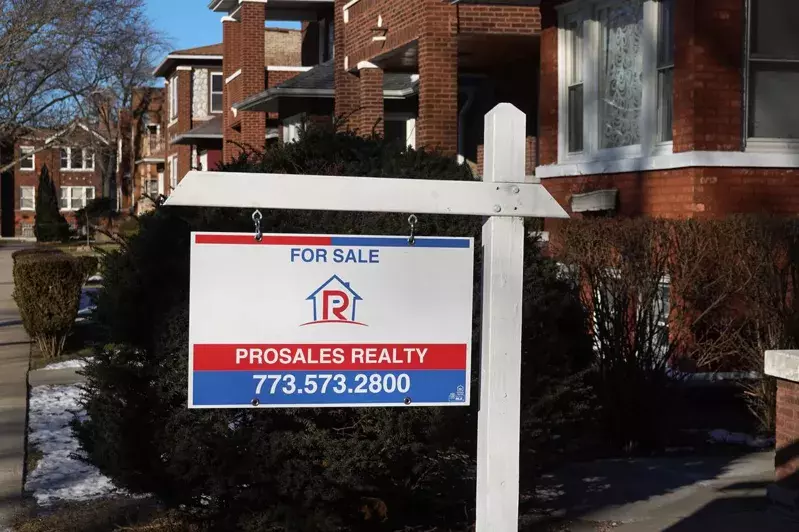

湾区住房危机严重 房东租客同陷困境
世界新闻网
3/14/2022

79岁长者苏丽文(Pat McHenry Sullivan)与罹患老年失智症的82岁丈夫长年住在屋仑一处两房公寓。可是从去年秋季开始,由于申请不到疫情期间房租救济金,苏丽文被迫必须从其人寿保险取款缴纳房租。
不但房客面临困境,房东情况也好不到那里,住在柏克莱的房东玛琪欧娜(Susan Marchionna)收不到房租,考虑出售她居住多年的房子。玛琪欧娜说,从去年秋天开始,她就收不到任何房租。房客从去年秋天开始,宣称疫情关系,工作不顺利,无法缴房租,申请延缓缴纳。玛琪欧娜长期与房客争辩,感到十分疲惫。
苏丽文与玛琪欧娜虽然一个是房客、一个是房东,可是陷入同样困境。两人同样申请加州房租救济金,可是都得不到任何回答,而3月31日的加州房租紧急计划截止日期即将来临。

苏丽文有硕士学位,也会操作电脑,知道如何经营私人商务,因此认为缴付两房公寓房租应当没有问题。两人从2006年起租下这所公寓,目前月租金为1426元,新冠疫情来临之后,过了一些日子,失业救济金已停发了,新冠疫情仍然存在,医疗费用以及种种花费,再加上苏丽文必须照顾82岁的先生,很难有时间找工作,经济压力愈来愈大。
苏丽文最后一次准时缴付房租为去年9月,随后开始动用人寿保险。苏丽文说,她从去年9月开始上网,设法申请房租救济,可是困难重重,她也设法申请加州的房租救济,可是总是无法顺利达成。
根据加州房屋与社区发展部门(the California Department of Housing and Community),申请房租救济的家庭高达46万8314户。州府已对40%申请家庭发出超出22亿元的房租救济金,然根据全国公平组织的报告,约只有16%申请救济家庭取得救济。

玛琪欧娜四年前孩子长大离开后,将柏克莱住家租出去,自己住在后院一所小屋。刚开始时一切顺利,她每个月可以收到4500元租金,可以轻松缴付房贷,随后新冠疫情来袭,他丢了工作,长期租客也于去年秋季离开,留下另一名房客,然而这名房客以受困于新冠为由,宣称无法缴付租金。
玛琪欧娜别无选择,于今年元月申请1万7500元房租救济金。由于收不到房租,每个月必须缴纳的房贷,再加上房屋修理费用,玛琪欧娜陷入困境。
有些房地产代理人、保护房东组织对玛琪欧娜说,保护驱逐房客原来的用意是保护弱势房客,可是有些房客滥用这种保护权益。根据全国公平组织(National Equity Atlas),直到今年元月为止,加州共有72万1000名房客,仍积欠房东约33亿元。许多加州救济计划认为,房客可以自行证明,他们无法缴付房租,主要原因是新冠疫情所造成的。


北加阿县发紧急租金援助5000万 4500家庭受益
世界新闻网
02/22/2022

阿拉米达县住房和社区发展部表示,已发放超过5000万的州和联邦紧急租赁援助计划(ERAP)资金,4500多个家庭受益。95%的资金发给极低或非常低的收入居民(低于地区收入中位数的50%),60%的资金给了妇女当家的家庭。
阿县与租户权利和法律服务非营利组织拉扎法律中心(Centro Legal de la Raza)合作管理该计划,与50多个本地基于信仰和社区机构合作,用超过15种语言宣传该计划并协助申请程序。自去年9月以来,批准数增加近300%。
阿县的州和联邦紧急租赁援助计划覆盖除了屋仑和佛利蒙市的全县其他区域。这两个城市自己管理援助资金。根据阿县的数据,州和联邦紧急租赁援助计划的资金中,4500多个家庭的申请得到批准,以支持住房稳定性。60%的援助用于女户主家庭。75%的援助给了收入在地区中位数30%以下的极低收入申请人。另外19%的援助,被分配给非常低收入的人(收入在地区中位数30-50%之间)。总的来说,95%的申请者收入低于地区中位数50%,100%的援助给了地区中位数低于80%的申请者。

第三区县议员布朗(Dave Brown)表示,阿县的每个角落都需要租金援助。租户和业主正在受到伤害。这些资金必不可少的,阿县正在快速有效地将资金发放出去。
阿县州和联邦紧急租赁援助计划经理马格纳(Eric Magana)说,疫情对社区的低收入和极低收入居民,特别是无证移民和有色人种,造成了前所未有的影响。这些租赁资金是许多人的生命线。
阿县还颁布了一项暂停逼迁令,在疫情期间提供了急需的住房稳定,该暂停令将持续到公共卫生危机结束后的60天。这项紧急法令规定,除了少数例外情况,县内任何地方都禁止逼迁。
能够证明因疫情而造成经济困难的租房者,有可能经历游民状态,或合格的失业者,仍可申请租金减免。紧急租金援助资金可用于支付过去12个月和未来3个月的租金和水电费。市民可致电211或访问 ac-housingsecure.org 查找详情。

3因素集结 全美都会区房租去年攀20% 迈阿密飙到49.8%
世界新闻网
02/20/2022
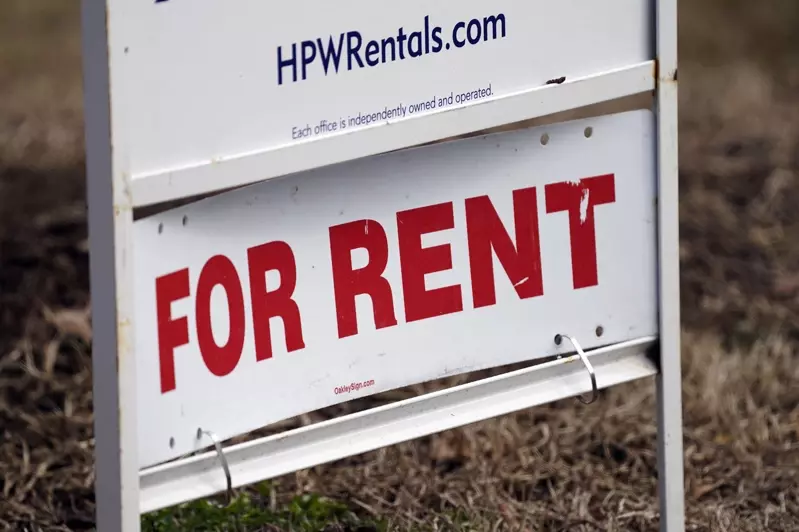
全国房租持续攀升,都会区涨幅达20%已是常见现象、甚至也有高达50%以上;造成此状况的原因,还是因为需求大增、供应不足、投资客炒作等对民众进入房市的不利因素,全部同时集结在一起所致;租金持续高攀,尚难有降温迹象。
地产网站Realtor.com的数字显示,全国前50大都会区在2020年12月至2021年12月间,两房以下的房租涨幅中位数达到19.3%,涨幅最凶的迈阿密都会区更高达49.8%。

Rebecca Blackwell—AP
劳工部数据显示,今年1月房租较去年12月增0.5%,幅度看似不大,却是过去20年来最大的月涨幅。
造成此种状况的最主要原因还是供不应求;在需求面,哈佛大学房市学者惠特尼‧艾尔古德-奥布里基(Whitney Airgood-Obrycki)表示,新冠疫情初期,许多年轻人与父母同住避疫,随着去年经济重启,现在他们又重新回到租屋市场。
但是在供给面,由于营建业多年的疲软,现在的独栋房屋的新屋供给缺口较2019年底增加51%至580万套;现在营建业想重振旗鼓,却又有供应链危机及劳动力短缺的压力,导致房价高攀,收入较高者也必须继续租房度日。
由于供需失衡,去年第四季的租屋市场空屋率仅5.6%,为1984年以来的最低数字;由于空屋率甚低,让房东更有议价空间以提高房租。
更糟的是,热络的房市让许多投资客竞相进场;地产网站Redfin的数字显示,2021年第三季的购屋者中,18.2%为企业或机构,创下史上新高。
例如在亚利桑纳州图桑,就发生加州开发商买入一栋老人公寓,然后将租金提高逾50%,此事引来该州联邦参议员席纳玛(Kyrsten Sinema)的关注。
Realtor.com首席经济学者丹妮儿·哈尔(Danielle Hale)表示,随着营建业推动供给增加,租屋市场飙涨的现象不会一直持续,预估今年全年房租涨幅约7.1%左右。
南加房租大涨 一居室月租金超2000 涨幅达30%
世界新闻网
02/13/2022
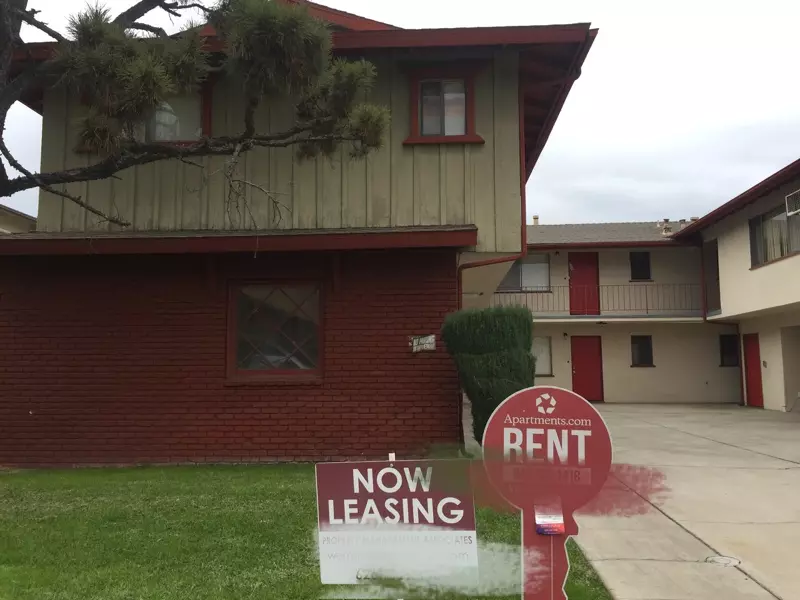
疫情期间,南加洛杉矶县华人聚居城市房租价格大幅上涨,房产经纪表示,上涨幅度最高的是公寓楼,不少城市的一居室公寓月租金已达2000元以上,最高涨幅达30%。
LCS房地产投资公司经理林友仁(Johans Han)表示,据他观察,圣盖博谷附近几个华人城市中,南巴沙迪那市(South Pasadena)房租上涨最高,一居室公寓的月租金平均价格已超过2000元,疫情前租金是1500元左右,涨幅高达30%。林友仁指出,「因为市场供需问题,最近南巴沙迪那市的租房需求特别高,除一房公寓火爆外,两房两浴的公寓租金目前都在2500元以上。」他还提到,2000平方呎的独幢房子去年月租金在3800元左右,今年调高到4500元,上涨18%。

林友仁说,他有不少租房客户一直在准备买房,无奈疫情期间房价大涨超出预算,如今这些客户情愿支付高租金,寄希望于今年房价调整后再入市购买。
亚凯迪亚市(Arcadia)资深房产经纪张先生表示,目前蒙特利公园(Monterey Park)、阿罕布拉(Alhambra)、圣盖博(San Gabriel)等华人城市的一房公寓,平均月租金都在1400-1600元之间,两房租金平均在2000元以上;而亚凯迪亚市新建的公寓楼,一居室的月租金在2000-3000元之间的都有。
张先生说,目前房租普遍涨价,主因是跟着房价在上涨,而很多人买不起房,导致租房市场继续火热,房东就会相应调高房租。他感慨道,疫情改变了太多,很多人还在失业,现在哪怕房租上涨5%,对很多人来说都是很大的困难,但无奈市场走向如此。
华人郭先生一家在阿市的两房公寓里已居住七八年,最近房东提出要上调房租,郭先生与房东几番讨价还价,希望尽量少涨一些,并提出可以自己承担修补房屋损坏的费用,比如更换破损的地毯、漏水的房顶等。
郭先生说,「我们在这里住了很多年,很少麻烦房东,碰到问题一直都自己解决,房东最终同意每月涨100元,对于房东来说,虽然市场房租涨幅很高,但有时候找一个像我们这样的好房客也不容易。」郭先生租的二居室公寓月租金目前是1600元,面对如今的租房市场,他说自己很庆幸,现在上哪儿都找不到这个价格的房子。
林友仁也表示,尽管市场上房租上涨趋势明显,但如果能找到一个好房客,房东通常也会愿意调整房租价格,「比如说,月租金3000元的可以降低到2800元,因为好的房客对于房东来说会省心很多。」

纽约市房租开年狂飙 供不应求闲置房源骤减超80%
世界新闻网
02/10/2022

随着疫情的趋缓和远程办公政策的逐步取消,纽约市五大区租金都在上个月回到疫情前水平,曼哈顿租金狂飙23%,皇后区和布碌仑(布鲁克林)热门租房区价格分别上涨28%和11%,房源供不应求更是骤减超过80%。
根据房地产估价公司Miller Samuel的最新报告,上个月曼哈顿公寓租金中位数为3476元,超过了2020年1月时的3472元,直逼史上最高纪录,也就是2020年4月的3540元。
此外,相比去年同期,曼哈顿闲置房源骤减83.3%,2021年1月时有2万5883套公寓挂牌出租,而到了上月只剩4316套。
其实早在去年12月,曼哈顿公寓的平均租金已经接近历史最高水平,在供应量急剧减少的情况下,房东们在不断地涨租,当时曼哈顿租金中位数已经达到3392元,成为十年来12月房租的最高纪录,比2021年12月增长了21%。
新冠初始时的封城居家隔离政策,使大批纽约市居民逃离城市,前往郊区居家办公,因此市区租金价格大幅下降;然而随着去年疫苗的普及,政府机构、私企和学校逐步恢复线下模式,纽约市居民又再度搬回市区,从而造成了房源的供不应求,租金再次飙升。
除了曼哈顿之外,其他区域的热门租房区也同样价格飙升。布碌仑(布鲁克林)在1月的租金中位数达到2747元,比去年同期上涨11.1%;待租房源只有2780套,相比2021年1月下降了86.4%,当时还有2万0500个闲置公寓。
备受租客欢迎的皇后区西北部,公寓租金中位数比去年同期上涨28%以上,由2021年1月的2185元,涨价至2811元。

房租恶涨12% 纽约年轻人迁往新州
世界新闻网
02/05/2022

疫情趋缓带来的是纽约市房租的持续回升,许多高档楼盘租金增值甚至高于疫情之前;不少年轻租客在扛过新冠病毒之后,却没撑住通货膨胀、房价飙升及高昂税收带来的压力,逐渐搬离纽约入住一河之隔的新泽西。
根据房地产估价公司Miller Samuel报告,曼哈顿租价中位数在去年秋天,实现了2020年5月后的首次正向增长,涨幅与2019年12月近乎持平,新楼和豪楼的增长速度更快,房价上涨了12%,中位数达到5170元。
这导致原本在高档楼盘住得安稳的年轻房客们,不得不开始另寻出路。
2019年就入住曼哈顿中城地狱厨房(Hell’s Kitchen)的陈怡,公寓续租期恰好赶上房价回温期,新合同价格着实让她吓了一跳,「我的一房公寓从19年的3500元涨到4900元,而且房东不接受讨价还价,说附近的楼盘租金都过了5000元,他们已经是给老租客优惠了。」
陈怡说,疫情第一年续租时楼市萧条,业主为了挽留老租客还提供了免费网络等优惠礼包,没想到如今待遇天差地别,「后来我搜索附近房价,发现确实都上涨得很厉害,可能是报复性回升吧,把疫期亏本的都赚回来。」
已经在皇后区森林小丘某高档公寓住了五年的吴凯瑞,也遇到了同样问题,本来打算在自己的小区为父母新租一套两房公寓的她,发现半年前看的2500元直接变成了近期的3800元,「有点后悔没早点租下来,想不到房价回温的这么快。」吴凯瑞开始考虑搬家到新州。
地产网站StreetEasy去年底推出的报告显示,纽约热门租房区,都已经在秋天逐步恢复到疫情前的水平,「我已经决定搬到泽西市,那里靠近哈德逊河的楼盘和地狱厨房质量不相上下,但一房价格却才2500元不到;而且新州税收方面和纽约相比有不小的优势,最近通货膨胀的趋势越发明显,也得节省生活开支。」陈怡说。
房屋中介商魏女士表示,「泽西市确实成为了纽约上班族和留学生的新欢,加上近期纽约市租金上涨,很多本来在曼岛和长岛城看房的年轻人,最后都选择了新州。」
泽西市的年轻人居住区,已经从早期的新港(Newport),延伸到内部的Journal Square甚至是纽瓦克;不少地产商看重年轻人对于交通便利和价格优势的依赖,纷纷在主要Path站旁创建全新的高档公寓,「疫前年轻人更喜欢长岛市,但是随着疫后这波房价提升,我想未来泽西市会成为更多人的首选。」
房租月月涨 热门城市飙4成…1/4房客逾半月薪缴租金
世界新闻网
02/01/2022

华盛顿邮报(WP)报导,全国租金连月上涨,但近期涨幅更剧烈也更普遍,迫使全国数百万人重新评估其生活情况,寻求搬至其他地方居住。
Jan 20, 2022
根据房地产经纪公司Redfin数据,去年平均每月租金增加14%至1877元,纽约市、德州奥斯汀(Austin)和迈阿密涨幅甚至高达40%。
根据纽约联邦储备银行(Federal Reserve Bank of New York)日前公布的报告,今年美国人预期租金会再上涨;与此同时,许多地区的租金冻结和禁止逼迁令也已到期。

房地产经纪公司Redfin首席经济学者戴柔.菲尔韦瑟(Daryl Fairweather)表示:「2021年下半年租金狂涨,新冠肺炎疫情使经济暂缓,如今万物待兴,通膨攀升,租金也上涨,大家开始发现自己没有预期那么多的可支配收入。」
租金高涨估计也是未来数月通膨的主要驱力,住房成本占美国三分之一的消费者物价指数,这是依据当前房屋租金率计算而来。不过,经济学者指出,房租上涨会落后9至12个月,才会反映在通膨数据中。
不动产资讯公司CoreLogic首席经济学者诺萨夫特(Frank Nothaft)表示,因此就算消费者物价指数中的所有其他要素都下降,只要房租上涨,就可能使今年通膨指数继续高涨。
新冠疫情加深生活中许多面向的不平等,住房成本也不例外;屋主因低利率和房价上涨而获益,房客则面临住屋成本上涨;经济学者表示,房租跟食物或天然气等其他消费品类别不同,由于住房涉及年租约和长期房贷,一旦住房成本上涨,便很难快速跌回去。
根据哈佛大学住房研究联合中心对2018年人口普查数据的分析,1100万户家庭,或者每四名租客便有一人花逾一半月薪在房租上;专家表示,如今这个数字恐怕更高。
华邮指出,根据全国房客访问,许多房客开始寻找其他租屋选择;许多人考虑搬家,包括从德州首府奥斯汀搬至维吉尼亚州首府里奇蒙(Richmond),或从纽约搬到德拉瓦州多佛(Dover)。
Jan 17, 2022
然而随着经济逐渐复苏,民众重返大城市,公寓住房率也回升;菲尔韦瑟表示,房价、贷款率和租屋需求上升,房东大有调涨房租的空间。
拜登政府也开始重新安排「紧急房租援助计划」(Emergency Rental Assistance Program)中未使用的465亿元,协助华府、休士顿和圣地牙哥等城市的居民减轻房租和水电费的负担;拜登总统也承诺,未来三年将增加近10万户可负担住房。
通膨伤「薪」 劳工去年收入减2.4% 学者:今年工资缓增
世界新闻网
01/31/2022

新闻周刊报导,服务于私人产业的美国劳工在2021年里,虽获得4.7%的史上最高平均加薪幅度,却因为通货膨胀严重,食物、汽油等价格飙至近40年新高,导致实质收入其实缩水2.4%。展望2022年趋势,经济学者指出,工资仍将继续调高,但速度将较去年缓慢。
报导指出,劳工统计局数据显示,2021年里只有休闲娱乐及餐旅业领域的劳工获得加薪幅度足以抵抗物价飞涨。
休闲娱乐及餐旅业时薪员工在2021年平均加薪14%,薪资价码来到19.57元。而在2021年里,做为通货膨胀指针的消费者物价指数(CPI)则增加了7%。
其他私人产业劳工的加薪幅度,则都赶不上通膨。报导指出,专业人士及商业服务业,6.2%调薪幅度仅次于休闲娱乐及餐旅业。专业人士及商业服务业包括会计师、律师、建筑师、图像设计师、管理顾问、清洁工、广告公司员工、办公室行政人员及电话客服中心员工,2021年整体平均时薪来到37.81元。
运输及仓储业、零售贸易业员工2021年则都有大约5%加薪。
受到疫情,大批劳工提前退休,某些职业妇女被迫离开职场在家照顾小孩。雇主面临人力短缺,则想尽办法招致员工。
ZipRecruiter网站首席经济学者茱莉亚‧波拉克(Julia Pollak)分析,如今雇主为了吸引劳工,推出各式各样的诱因。她说,长年以来统计数字显示,平均每个职缺有2.4名失业者争取,「现在则是平均每个职缺有0.6名失业者争取,各行各业都展开抢人大作战」。
报导指出,2021年加薪幅度最大的职缺是低薪劳动工作,休闲娱乐及餐旅业里的某些非管理阶层员工,加薪幅度甚至将近16%,包括餐厅、酒吧、饭店、博物馆、游乐园、运动场、赌场的时薪制劳工。
经济专家分析,美国劳工在2022年仍可望继续获得加薪,只不过速度将比去年较为缓慢,至于加薪幅度能否超过通膨则有待观察。
Hotter inflation could mean higher tax bills for Americans in these states
Some Americans could see higher state tax bills as inflation spirals higher
By Megan Henney | FOXBusiness
11/12/2021
Millions of Americans could be in store for higher taxes as spiraling inflation pushes consumer prices higher.
The phenomenon, known as “bracket creep,” results when taxpayers are pushed into higher-income brackets even though their purchasing power is essentially unchanged due to steeper prices for everyday goods.
Although the IRS adjusts federal income taxes for inflation, a recent analysis published by the Tax Foundation shows that 15 states fail to account for inflation when drawing the brackets for taxes on wage and income. Another 18 states do not index personal exemption tax to inflation.
Altogether, 22 states have at least “one major unindexed provision,” which could mean higher taxes for millions of taxpayers amid a months-long inflation spike that has shown no sign of slowing down.
Essentially, when tax brackets, the standard deduction or personal exemptions are not adjusted for inflation, that money loses value due to the higher price that consumers are paying for things like food, rent and gasoline, said the analysis, authored by Tax Foundation’s vice president of state projects, Jared Walczak.

“Bracket creep occurs when more of a person’s income is in higher tax brackets because of inflation rather than higher real earnings,” Walczak said.
The so-called “hidden tax” is most likely to affect residents living in states where taxes are not indexed to inflation, meaning there’s no automatic cost-of-living adjustment built into the tax provision in order to keep pace with inflation. States with an income tax that is not indexed to inflation include Alabama, Connecticut, Delaware, Georgia, Hawaii, Kansas, Louisiana, Maryland, Mississippi, New Jersey, New Mexico, New York and Oklahoma.
For instance, a hypothetical Delaware resident who earned $60,000 in taxable income in 2019 and now makes $64,000 has not actually seen an increase in real income; the $64,000 she earns today has about the same purchasing power as the $60,000 she made in 2019, Walczak wrote.
On top of that, because her state’s income tax brackets are not indexed to inflation, that higher salary pushes her into a higher property tax rate (6.6%), whereas before she was paying a rate of 5.5%. Though the resident’s purchasing power is unchanged, her tax bill rises by $264.
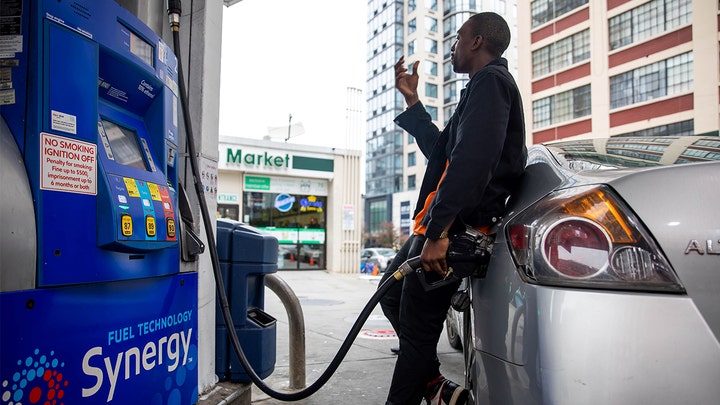
“The absence or insufficiency of cost-of-living adjustments in many state tax codes is always an issue, as it constitutes an unlegislated tax increase every year, cutting into wage growth and reducing return on investment,” Walczak wrote. “During a period of higher inflation, however, the impact is particularly significant.”
The analysis comes as the government released new data this week reporting that prices for U.S. consumers surged 6.2% in October compared with a year earlier. So-called core prices, which exclude the more volatile measurements of energy and food, rose 4.6% over the past year. Both are the largest increases in 30 years.
Rising inflation is eating away at strong gains and wages and salaries that American workers have seen in recent months (average hourly wages in the U.S. actually fell 1.2% last month compared with October 2020 when accounting for inflation).
Economists expect the spike to last well into 2022: A new Goldman Sachs analyst note published on Sunday warned that inflation metrics will remain “quite high for much of next year” until global supply chain bottlenecks clear up.
“It is now clear that this process will take longer than initially expected, and the inflation overshoot will likely get worse before it gets better,” the Goldman economists wrote.
通膨导致薪水推高级别 纽约等州缴税负担加重
世界新闻网
11/12/2021
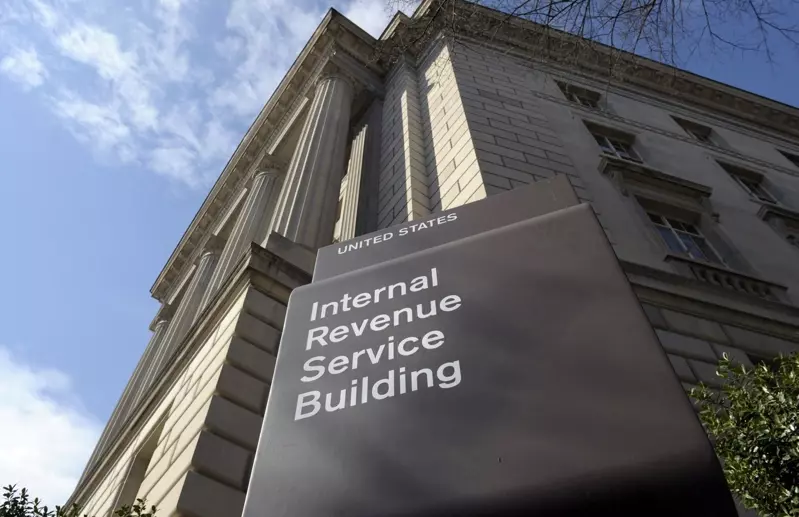
受到通货膨胀影响,民众帐面上薪水看似增加,缴税时被推上税率较高的税收级距(tax bracket,又称税收级别),形同税务负担变重,这种「税级攀升」(bracket creep)状况可能将出现数以百万计的纳税人身上,尤其是住在纽约州、新泽西州、马里兰州及夏威夷州等十多州的居民。
通膨因素之下万物齐涨,民众帐面薪水虽然变多,但消费能力基本上没有改变。然而,薪酬变高却让纳税人因此被推上税率较高的税收级距,「税级攀升」的结果变是个人所得税负担变重。
国税局(IRS)将通膨因素纳入联邦所得税计算,但保守派智库「税务基金会」(Tax Foundation)日前公布研究报告指出,全美有15州规画州民个人所得税税收级距时,并没有把通货膨胀列入考量,至少有18州的个人免税额(personal exemption)计算,并未纳入通膨因素。
「税务基金会」指出,综合看来,全美有22州州法当中至少存在一项未随物价连动(unindexed)税制条款,导致纳税人在物价连续数月走高之际,还要面临更重的缴税负担。
撰写这份研究报告的「税务基金会」州税计划部副总监瓦查克(Jared Walczak)分析,税收级别、标准扣除额(standard deduction)或个人免税额如果没有纳入通膨因素,金钱等于在高物价之下贬值,消费者购买食物、汽油及缴房租,通通受到冲击。
州税如果没有把通膨列入计算的机制,居民犹如面临「隐藏税」(hidden tax)。阿拉巴马州、康乃狄克州、德拉瓦州、乔治亚州、夏威夷州、堪萨斯州、路易西安纳州、马里兰州、密西西比州、新泽西州、新墨西哥州、纽约州及奥克拉荷马州,州法当中的个人所得税计算,都没有纳入通膨连动因素。
瓦查克举例说,一名德拉瓦州居民如果2019年应税收入(taxable income)为6万元,现在应税收入增为6万4000元,受到通货膨胀影响,现在的购买能力其实跟2019年相差不大,由于德拉瓦州州税税收级距并未考虑通膨因素,2019年缴税时房地产税率(property tax rate)为5.5%,现在则因帐面收入增加,被推上税率6.6%的更高级别,要缴更多税。
瓦查克在报告中指出,通货膨胀长期存在的期间,税级攀升将对民众带来「特别重大的打击」。
您的税档变了吗?IRS因通胀上调联邦收入税门槛
来源:美国中文网
11/10/2021
周三国税局(IRS)宣布,2022年联邦收入税的边际税率不变,但是考虑到通货膨胀,每档税率对应的收入区间将有所上调,另外最高抵免额度也有所提高。
2022年,调整后的个人报税者边际税率为:
10%: 不超过$10,275的收入部分
12%: $10,275到$41,775之间的收入部分
22%: $41,775到$89,075之间的收入部分
24%: $89,075到$170,050之间的收入部分
32%: $170,050到$215,950之间的收入部分
35%: $215,950到$539,900之间的收入部分
37%: 超过$539,900的收入部分
(以上收入均指调整后的应缴税收入)
夫妻合报的边际税率如下:
10%: 不超过$20,550的收入部分
12%: $20,550到$83,550之间的收入部分
22%: $83,550到$178,150之间的收入部分
24%: $178,150到$340,100之间的收入部分
32%: $340,100到$431,900之间的收入部分
35%: $431,900到$647,850之间的收入部分
37%: 超过$647,850的收入部分
(以上收入均指调整后的应缴税收入)
调整后,夫妻合报的最高档税率对应年收入上调了将近2万元。实际上,所有税档对应的收入水平较2021年都上调了3%左右。这一上调幅度是近四年来的最大值。
另外,对于个人报税者来说,联邦收入税的最高抵免额调涨了400元至12950元;一家之主的最高抵免额上调了600元至19400元;夫妻合报的最高抵免额则上调了800元至25900元。
每年,IRS都会根据通胀调整税率对应的收入水平。周三劳工部数据显示消费者价格指数同比上涨了6.2%,是自1990年来的最大年度增幅。
IRS provides tax inflation adjustments for tax year 2022
R-2021-219, November 10, 2021
WASHINGTON — The Internal Revenue Service today announced the tax year 2022 annual inflation adjustments for more than 60 tax provisions, including the tax rate schedules and other tax changes. Revenue Procedure 2021-45 PDF provides details about these annual adjustments.
Highlights of changes in Revenue Procedure 2021-45:
The tax year 2022 adjustments described below generally apply to tax returns filed in 2023.
The tax items for tax year 2022 of greatest interest to most taxpayers include the following dollar amounts:
- The standard deduction for married couples filing jointly for tax year 2022 rises to $25,900 up $800 from the prior year. For single taxpayers and married individuals filing separately, the standard deduction rises to $12,950 for 2022, up $400, and for heads of households, the standard deduction will be $19,400 for tax year 2022, up $600.
- The personal exemption for tax year 2022 remains at 0, as it was for 2021, this elimination of the personal exemption was a provision in the Tax Cuts and Jobs Act.
- Marginal Rates: For tax year 2022, the top tax rate remains 37% for individual single taxpayers with incomes greater than $539,900 ($647,850 for married couples filing jointly).The other rates are:
35%, for incomes over $215,950 ($431,900 for married couples filing jointly);
32% for incomes over $170,050 ($340,100 for married couples filing jointly);
24% for incomes over $89,075 ($178,150 for married couples filing jointly);
22% for incomes over $41,775 ($83,550 for married couples filing jointly);
12% for incomes over $10,275 ($20,550 for married couples filing jointly).
The lowest rate is 10% for incomes of single individuals with incomes of $10,275 or less ($20,550 for married couples filing jointly).
- For 2022, as in 2021, 2020, 2019 and 2018, there is no limitation on itemized deductions, as that limitation was eliminated by the Tax Cuts and Jobs Act.
- The Alternative Minimum Tax exemption amount for tax year 2022 is $75,900 and begins to phase out at $539,900 ($118,100 for married couples filing jointly for whom the exemption begins to phase out at $1,079,800). The 2021 exemption amount was $73,600 and began to phase out at $523,600 ($114,600 for married couples filing jointly for whom the exemption began to phase out at $1,047,200).
- The tax year 2022 maximum Earned Income Tax Credit amount is $6,935 for qualifying taxpayers who have three or more qualifying children, up from $6,728 for tax year 2021. The revenue procedure contains a table providing maximum EITC amount for other categories, income thresholds and phase-outs.
- For tax year 2022, the monthly limitation for the qualified transportation fringe benefit and the monthly limitation for qualified parking increases to $280.
- For the taxable years beginning in 2022, the dollar limitation for employee salary reductions for contributions to health flexible spending arrangements increases to $2,850. For cafeteria plans that permit the carryover of unused amounts, the maximum carryover amount is $570, an increase of $20 from taxable years beginning in 2021.
- For tax year 2022, participants who have self-only coverage in a Medical Savings Account, the plan must have an annual deductible that is not less than $2,450, up $50 from tax year 2021; but not more than $3,700, an increase of $100 from tax year 2021. For self-only coverage, the maximum out-of-pocket expense amount is $4,950, up $150 from 2021. For tax year 2022, for family coverage, the annual deductible is not less than $4,950, up from $4,800 in 2021; however, the deductible cannot be more than $7,400, up $250 from the limit for tax year 2021. For family coverage, the out-of-pocket expense limit is $9,050 for tax year 2022, an increase of $300 from tax year 2021.
- The modified adjusted gross income amount used by joint filers to determine the reduction in the Lifetime Learning Credit provided in § 25A(d)(2) is not adjusted for inflation for taxable years beginning after December 31, 2020. The Lifetime Learning Credit is phased out for taxpayers with modified adjusted gross income in excess of $80,000 ($160,000 for joint returns).
- For tax year 2022, the foreign earned income exclusion is $112,000 up from $108,700 for tax year 2021.
- Estates of decedents who die during 2022 have a basic exclusion amount of $12,060,000, up from a total of $11,700,000 for estates of decedents who died in 2021.
- The annual exclusion for gifts increases to $16,000 for calendar year 2022, up from $15,000 for calendar year 2021.
- The maximum credit allowed for adoptions for tax year 2022 is the amount of qualified adoption expenses up to $14,890, up from $14,440 for 2021.
More Information
- News Release IR-2021-216, IRS announces 401(k) limit increases to $20,500.
IRS announces 401(k) limit increases to $20,500
R-2021-216, November 4, 2021
WASHINGTON — The Internal Revenue Service announced today that the amount individuals can contribute to their 401(k) plans in 2022 has increased to $20,500, up from $19,500 for 2021 and 2020. The IRS today also issued technical guidance regarding all of the cost‑of‑living adjustments affecting dollar limitations for pension plans and other retirement-related items for tax year 2022 in Notice 2021-61 PDF, posted today on IRS.gov.
Highlights of changes for 2022
The contribution limit for employees who participate in 401(k), 403(b), most 457 plans, and the federal government’s Thrift Savings Plan is increased to $20,500, up from $19,500.
The income ranges for determining eligibility to make deductible contributions to traditional Individual Retirement Arrangements (IRAs), to contribute to Roth IRAs, and to claim the Saver’s Credit all increased for 2022.
Taxpayers can deduct contributions to a traditional IRA if they meet certain conditions. If during the year either the taxpayer or the taxpayer’s spouse was covered by a retirement plan at work, the deduction may be reduced, or phased out, until it is eliminated, depending on filing status and income. (If neither the taxpayer nor the spouse is covered by a retirement plan at work, the phase-outs of the deduction do not apply.) Here are the phase-out ranges for 2022:
- For single taxpayers covered by a workplace retirement plan, the phase-out range is increased to $68,000 to $78,000, up from $66,000 to $76,000.
- For married couples filing jointly, if the spouse making the IRA contribution is covered by a workplace retirement plan, the phase-out range is increased to $109,000 to $129,000, up from $105,000 to $125,000.
- For an IRA contributor who is not covered by a workplace retirement plan and is married to someone who is covered, the phase-out range is increased to $204,000 to $214,000, up from $198,000 to $208,000.
- For a married individual filing a separate return who is covered by a workplace retirement plan, the phase-out range is not subject to an annual cost-of-living adjustment and remains $0 to $10,000.
The income phase-out range for taxpayers making contributions to a Roth IRA is increased to $129,000 to $144,000 for singles and heads of household, up from $125,000 to $140,000. For married couples filing jointly, the income phase-out range is increased to $204,000 to $214,000, up from $198,000 to $208,000. The phase-out range for a married individual filing a separate return who makes contributions to a Roth IRA is not subject to an annual cost-of-living adjustment and remains $0 to $10,000.
The income limit for the Saver’s Credit (also known as the Retirement Savings Contributions Credit) for low- and moderate-income workers is $68,000 for married couples filing jointly, up from $66,000; $51,000 for heads of household, up from $49,500; and $34,000 for singles and married individuals filing separately, up from $33,000.
The amount individuals can contribute to their SIMPLE retirement accounts is increased to $14,000, up from $13,500.
Key employee contribution limits that remain unchanged
The limit on annual contributions to an IRA remains unchanged at $6,000. The IRA catch-up contribution limit for individuals aged 50 and over is not subject to an annual cost-of-living adjustment and remains $1,000.
The catch-up contribution limit for employees aged 50 and over who participate in 401(k), 403(b), most 457 plans, and the federal government’s Thrift Savings Plan remains unchanged at $6,500. Therefore, participants in 401(k), 403(b), most 457 plans, and the federal government’s Thrift Savings Plan who are 50 and older can contribute up to $27,000, starting in 2022. The catch-up contribution limit for employees aged 50 and over who participate in SIMPLE plans remains unchanged at $3,000.
Details on these and other retirement-related cost-of-living adjustments for 2022 are in Notice 2021-61 PDF, available on IRS.gov.
最新!拜登银行监管新政,个人账户余额过$1万,IRS有权随时查账!
来源: 华人生活网
10/21/2021
0月20日,拜登政府放弃了一项有争议的提议,该提议要求国税局对每年交易金额超过600美元的所有银行账户收集更多数据。
该计划此前受到了共和党议员和银行业代表的广泛批评,称其税务执法策略代表了联邦政府对隐私的侵犯。
不过虽然该提议夭折,但是拜登政府并未完全放弃银行存款这一块的监管。
根据新规定,帐户余额超过1万美金,或者不包括薪资收入的存款、提款总额超过1万元,就会受到国税局加强检查;银行必须把帐户持有人的现金流导入导出汇整数据交给国税局,好让国税局锁定稽查目标。
民众注意的是通过工资收入获得的、自动扣除联邦税的收入的账户不计入其中。领取失业救济金和社会保障等联邦福利的人也可以豁免。
拜登表示:“很多富人为了逃税,每年从美国人民身上骗取数十亿美元。当适用于逃税行为的报告规则松散而模糊时,逃税行为就会猖獗起来。民主党人想要修复这个支离破碎的方法,打击高层的欺骗行为,”
财政部长珍妮特·耶伦(Janet Yellen)在会议上表示:“今天的新提案反映了政府的强烈信念,我们应该瞄准那些顶端的收入规模不付他们欠的税,同时保护美国工人通过设置银行账户阈值为10000美元,为工薪阶层提供豁免和教师和消防员一样。”
她表示,长期以来问题的核心是向IRS报告各种收入的方式存在差异:不透明的收入来源经常逃避审查,而工资和联邦福利通常几乎要完全遵守。这种双重税收制度是不公平的,剥夺了国家用于资助核心优先事项的资源。”
“新规定为了回应对范围的考虑,(国会)制定了一个新办法,包括对工薪阶层和工薪阶层以及联邦项目受益者的豁免。
这些变化将免除数百万美国人的申报要求,并帮助国税局将目标锁定在较富裕的美国人,特别是那些从投资、房地产和其他交易中赚钱的人,这些交易对国税局来说更难追踪。
最初的提议引起了共和党议员的愤怒,他们称这侵犯了隐私,是政府越权的一个例子。
即使修改了提案,参议院的共和党人仍然持批评态度。
爱达荷州共和党参议员迈克·克拉波(Mike Crapo)表示,拜登总统曾经承诺称,不会对年收入低于40万美元的美国人增税,他认为这一门槛应该适用于国税局的申报。
“他们为什么不直接颁布禁令,禁止美国国税局窥探年收入低于40万美元的人的账户呢?”我认为,这是这个方法的发起者应该问的问题。”
另外,银行业代表仍对任何额外的报告要求持怀疑态度,称这将造成负担,尤其是对小型社区银行。
据了解,该提案距离实施还有很长的路要走。该计划目前包括在数万亿美元的社会支出计划中,立法者和白宫已经协商了几个月。如果该方案获得通过并签署成为法律,这项要求要到2022年12月才会生效。
政府估计,税收执法的改善将在未来10年增加6000亿美元的税收收入。
美联邦国税局查帐门槛升至1万 仍遭质疑侵犯隐私
来源:世界新闻网
10/20/2021
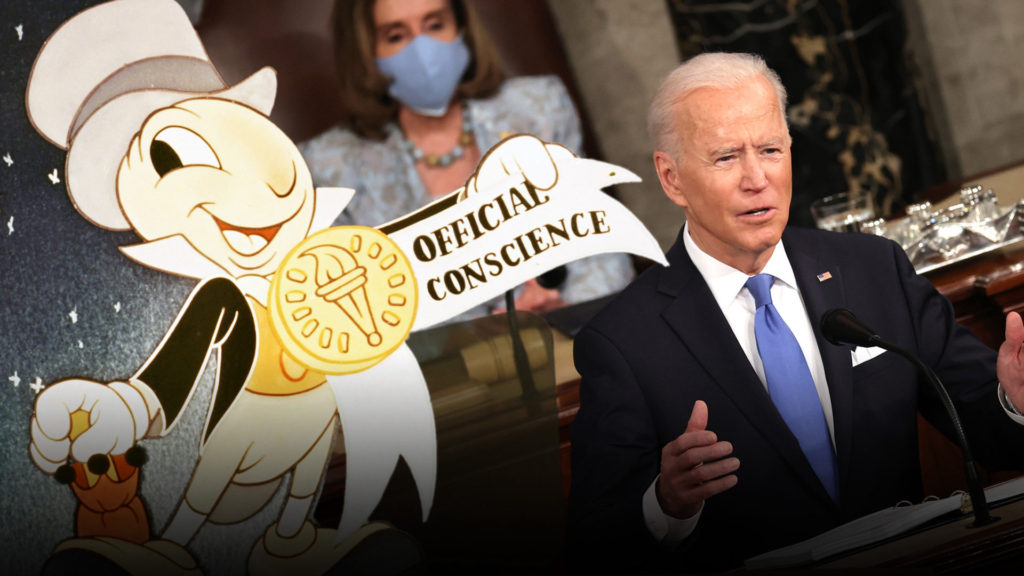
美国联邦国税局(IRS)拟查看所有存款馀额逾600元,或一年之内汇入汇出转帐额度超过600元的银行帐户,消息曝光后引发舆论强烈反弹;美国民主党籍国会议员19日达成协议,把查看帐户的适用对象改为存款馀额1万元以上帐户,但共和党方面则说,修正后的门槛仍侵犯民众隐私,“除非大家都不花钱。”
民主党籍麻州联邦参议员华伦(Elizabeth Warren)与参院财政委员会主席、民主党籍俄勒冈州联邦参议员魏登(Ron Wyden)19日下午公布修改后的新版政策。
根据新版规定,帐户馀额超过1万元,或者不包括薪资收入的存款、提款总额超过1万元,就会受到国税局加强检查;银行必须把帐户持有人的现金流汇入汇出彙整资料交给国税局,好让国税局锁定稽查目标。
彙整报告中的现金流不包括薪酬或工资所得,因为这部份原本就在国税局W-2报税表格权限范围;社安金支票也不会纳入现金流彙整报告统计。
国税局打算加强检视馀额600元以上帐户的计画,遭到共和党及金融机构极力反对,理由则是侵犯民众隐私;对于修正之后的新版规定,共和党国会议员也不接受。
共和党籍宾州联邦参议员图米(Pat Toomey)19日在记者会上说:“如果他们把门槛调高到1万元,适用对象仍然几乎包括所有人,还有所有商家。”
“民众平均帐户出入总额,约为6万1000元。”共和党籍爱达荷州联邦参议员克雷波(Mike Crapo)表示:“一般美国百姓都将成为这项计画的调查目标。”
帐户都被监视“除非大家不花钱”
克雷波说,排除薪水收入不计,其实影响不大,绝大多数民众的帐户还是将成为受到加强检视的对象,“除非大家都不花钱”。
面对共和党阵营批评,魏登回应指出:“共和党紧咬这个议题不放,用来做为扯谎藉口,原因是他们明白他们推出的税改政策其实非常失败。”
金融机构组织“美国独立银行家协会”(Independent Community Bankers of America,ICBA)发表声明指出,不管查看帐户的门槛是600元,1万元或10万元,适用对象都将包括数以百万计的消费者以及小型商家。
IRS:海外银行资产和金融账户申报10月15日截止
来源: 华人生活网
10/06/2021
很多华人即便入了美国国籍,但是在中国依旧有银行存款账户,也有人还有一些海外的生意。
大家要注意了,以下情况是要提交《国外银行和金融帐户报告》的。
在一个或多个帐户中有经济利益、有签字权或有其他权力,这些帐户包括在美国境外的银行帐户、经纪帐户、共同基金或其他金融帐户;日历年内任何时候所有外国金融帐户的总价值超过 1万 美元。
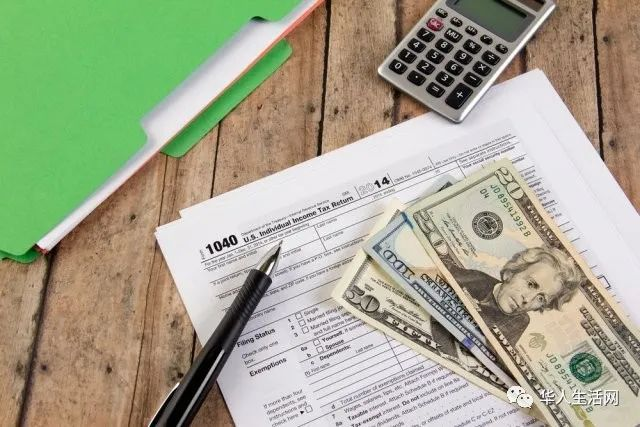
国税局(IRS)10月1日提醒美国公民、税法定义居民和任何境内法人实体,提交《国外银行和金融帐户报告》(FBAR) 的延期截止日为今年10 月15日。正常来说申报人若错过今年早些时候的 4 月 15 日年度截止日期,会被自动延期至 10 月 15 日提交FBAR,不需要申请延期。
国税局表示,申报人若受自然灾害影响,FBAR到期日可以要求进一步延长。重要的是,申报者须查看相关的FBAR 救援通知以获取完整信息。
目前由于1万美元这个界限的存在,国税局鼓励美国税务居民或拥有外国帐户的实体(即使是拥有相对较小的帐户),核查他们是否应就此报告申报。
美国税务居民指的是美国公民、居民或任何境内法人实体,例如合伙企业、公司、有限责任公司、遗产或信託。
国税局表示,申报人不应将FBAR与他们的联邦所得税申报表一起提交。
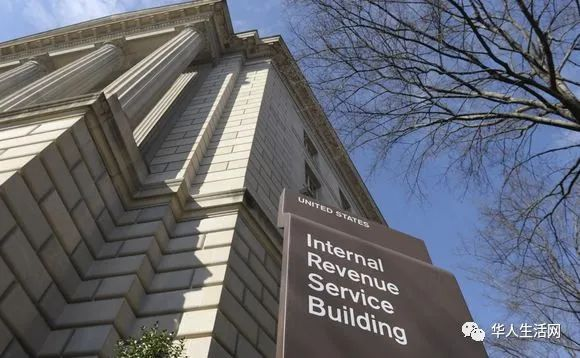
2020年FBAR必须以电子方式提交给金融罪行加强执法网络 (FinCEN),并且只能通过BSA电子申报系统网站递交。无法通过电子方式提交FBAR的纳税人必须致电金融罪行加强执法网络(FinCEN),美国境内拨打800-949-2732,美国境外拨打 703-905-3975。
凡未及时提交FBAR者,可能受到严重的民事和刑事处罚,可能导致罚款或监禁。
但若国税局确定延迟提交的原因合理,则不会惩罚那些延迟提交的FBAR 、报告外国帐户的人。
也有民众此前询问为什么经常看到5万美元的门槛,为什么此文中又说1万美元。这其实就是肥爸与肥咖的区别!
本月截止的是FBAR,也就是华人常说的肥爸。
“肥爸”﹙FBAR, Report of Foreign Bank and Financial Accounts ﹚是奥巴马政府于2009年5月发布税制改革“绿皮书”(The Green Book)中规定的,目的为严查美国境外所得税申报,以确定纳税人的境外所得完整申报,包含所有境外金融机构之账户,原先要求于2009年9月23日前需补申报海外账户。
后来,为了打击海外逃税,IRS又制定了“肥咖”(FATCA, Foreign Account Tax Compliance Act﹚。要求全世界各国银行交出美国税务居民金额美金5万以上的账户资料,企图在未来十年内追回估计超过85亿美元的海外逃税。两者在申报上也有许多区别:
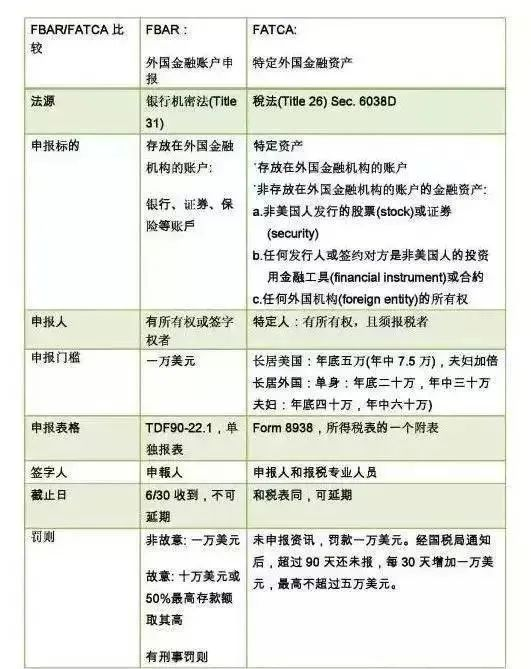
1 美元=6.47人民币
IRS: Oct. 15 FBAR extension deadline nears for foreign bank and financial account holders
IR-2021-196, October 1, 2021
WASHINGTON — The Internal Revenue Service reminds U.S. citizens, resident aliens and any domestic legal entity that the extension deadline to file their annual Report of Foreign Bank and Financial Accounts (FBAR) is Oct. 15, 2021.
Filers missing the April 15 annual due date earlier this year received an automatic extension until Oct. 15, 2021, to file the FBAR. They did not need to request the extension.
Filers affected by a natural disaster may have their FBAR due date further extended. It’s important filers review relevant FBAR Relief Notices for complete information.
Who needs to file?
The Bank Secrecy Act requires U.S. persons to file an FBAR if they have:
- Financial interest in, signature authority or other authority over one or more accounts, such as a bank account, brokerage account, mutual fund or other financial account located outside the United States, and
- The aggregate value of all foreign financial accounts exceeds $10,000 at any time during the calendar year.
Because of this threshold, the IRS encourages U.S. persons or entities with foreign accounts, even relatively small ones, to check if this filing requirement applies to them. A U.S. person is a citizen or resident of the United States or any domestic legal entity such as a partnership, corporation, limited liability company, estate or trust.
How to file
Filers do not file the FBAR with their federal income tax return. The 2020 FBAR must be filed electronically with the Financial Crimes Enforcement Network (FinCEN) and is only available through the BSA E-Filing System website. Those who are unable to e-file their FBAR must call FinCEN at 800-949-2732, or from outside the U.S. at 703-905-3975.
Avoid penalties
Those who don’t file an FBAR when required may be subject to significant civil and criminal penalties that can result in a fine and/or prison. The IRS will not penalize those who properly reported a foreign account on a late-filed FBAR if the IRS determines there was reasonable cause for late filing.
FBAR resources on IRS.gov:
- How to report foreign bank and financial accounts
- International Taxpayers
- IRS FBAR Reference Guide PDF
- FAQs About International Individual Tax Matters
- FinCEN’s website Reporting Maximum Account Value
To help avoid delays with tax refunds, taxpayers living abroad should visit Helpful Tips for Effectively Receiving a Tax Refund for Taxpayers Living Abroad on IRS.gov.
IRS: Report of Foreign Bank and Financial Accounts (FBAR)
Every year, under the law known as the Bank Secrecy Act, you must report certain foreign financial accounts, such as bank accounts, brokerage accounts and mutual funds, to the Treasury Department and keep certain records of those accounts. You report the accounts by filing a Report of Foreign Bank and Financial Accounts (FBAR) on FinCEN Form 114.
Who Must File
A United States person, including a citizen, resident, corporation, partnership, limited liability company, trust and estate, must file an FBAR to report:
- a financial interest in or signature or other authority over at least one financial account located outside the United States if
- the aggregate value of those foreign financial accounts exceeded $10,000 at any time during the calendar year reported.
Generally, an account at a financial institution located outside the United States is a foreign financial account. Whether the account produced taxable income has no effect on whether the account is a “foreign financial account” for FBAR purposes.
But, you don’t need to report foreign financial accounts that are:
- Correspondent/Nostro accounts,
- Owned by a governmental entity,
- Owned by an international financial institution,
- Maintained on a United States military banking facility,
- Held in an individual retirement account (IRA) you own or are beneficiary of,
- Held in a retirement plan of which you’re a participant or beneficiary, or
- Part of a trust of which you’re a beneficiary, if a U.S. person (trust, trustee of the trust or agent of the trust) files an FBAR reporting these accounts.
You don’t need to file an FBAR for the calendar year if:
- All your foreign financial accounts are reported on a consolidated FBAR.
- All your foreign financial accounts are jointly-owned with your spouse and:
- You completed and signed FinCEN Form 114a authorizing your spouse to file on your behalf, and your spouse reports the jointly-owned accounts on a timely-filed, signed FBAR.
Note: Income tax filing status, such as married-filing-jointly and married-filing-separately has no effect on your qualification for this exception.
The FBAR Reference Guide PDF) and FBAR instructions PDF provide more detailed information. The FBAR webinar explains how to calculate the aggregate value of your accounts to figure if you need to file an FBAR.
When to File
The FBAR is an annual report, due April 15 following the calendar year reported.
You’re allowed an automatic extension to October 15 if you fail to meet the FBAR annual due date of April 15. You don’t need to request an extension to file the FBAR.
If you are affected by a natural disaster, the government may further extend your FBAR due date. It’s important that you review relevant FBAR Relief Notices for complete information.
For certain employees or officers with signature or other authority over, but no financial interest in certain foreign financial accounts, the 2018 FBAR due date is deferred to April 15, 2020. See Notice 2018-1 PDF.
How to File
You must file the FBAR electronically through the Financial Crimes Enforcement Network’s BSA E-Filing System. You don’t file the FBAR with your federal tax return.
If you want to paper-file your FBAR, you must call FinCEN’s Regulatory Helpline to request an exemption from e-filing. See Contact Us below to reach this Helpline. If FinCEN approves your request, FinCEN will send you the paper FBAR form to complete and mail to the IRS at the address in the form’s instructions. IRS will not accept paper-filings on TD F 90-22.1 (obsolete) or a printed FinCEN Form 114 (for e-filing only).
If you want someone to file your FBAR on your behalf, use FinCEN Report 114a PDF, Record of Authorization to Electronically File FBARs, to authorize that person to do so. You don’t submit FinCEN Report 114a when filing the FBAR; just keep it for your records and make it available to FinCEN or IRS upon request.
Keeping Records
You must keep records for each account you must report on an FBAR that establish:
- Name on the account,
- Account number,
- Name and address of the foreign bank,
- Type of account, and
- Maximum value during the year.
The law doesn’t specify the type of document to keep with this information; it can be bank statements or a copy of a filed FBAR, for example, if they have all the information.
You must keep these records for five years from the due date of the FBAR.
Exception: An officer or employee who files an FBAR to report signature authority over an employer’s foreign financial account doesn’t need to personally keep records on these accounts. The employer must keep the records for these accounts.
Penalties
You may be subject to civil monetary penalties and/or criminal penalties for FBAR reporting and/or recordkeeping violations. Assertion of penalties depends on facts and circumstances. Civil penalty maximums must be adjusted annually for inflation. Current maximums are as follows:
| U.S. Code citation | Civil Monetary Penalty Description | Current Maximum |
|---|---|---|
| 31 U.S.C. 5321(a)(5)(B)(i) | Foreign Financial Agency Transaction – Non-Willful Violation of Transaction | $12,921 |
| 31 U.S.C. 5321(a)(5)(C) | Foreign Financial Agency Transaction – Willful Violation of Transaction | Greater of $129,210, or 50% of the amount per 31 U.S.C.5321(a)(5)(D) |
| 31 U.S.C. 5321(a)(6)(A) | Negligent Violation by Financial Institution or Non-Financial Trade or Business | $1,118 |
| 31 U.S.C. 5321(a)(6)(B) | Pattern of Negligent Activity by Financial Institution or Non-Financial Trade or Business | $86,976 |
Criminal penalty maximums are provided in the FBAR Resources below.
Filing Delinquent FBARs
Filing an FBAR late or not at all is a violation and may subject you to penalties (see Penalties above). If you have not been contacted by IRS about a late FBAR and are not under civil or criminal investigation by IRS, you may file late FBARs and, to keep potential penalties to a minimum, should do so as soon as possible. To keep potential penalties to a minimum, you should file late FBARs as soon as possible.
Follow these instructions to explain your reason for filing late. If you’re participating in an optional program to resolve FBAR noncompliance, such as Delinquent FBAR Submission Procedures or Streamlined Filing Compliance Procedures , follow the instructions for those programs.

Representation for FBAR Issues
You can file Form 2848, Power of Attorney and Declaration of Representative, if the IRS begins an FBAR examination as a result of an income tax examination (Title 26). Complete Line 3, acts authorized, as follows:
- Under Description of Matter – Matters relating to Report of Foreign Bank and Financial Accounts or “FBAR Examination”
- Under Tax Form Number – FinCEN Form 114
- Under Year(s) or Period(s) – applicable tax year(s)
(Note: Disregard previous guidance to complete Line 5a, additional acts authorized.)
Don’t use Form 2848 if a related income tax examination doesn’t apply. You may use a general power of attorney form executed under applicable state law.

FBAR Resources
- FBAR Reference Guide PDF
- Webinar: Reporting of Foreign Bank and Financial Accounts on the Electronic FBAR
- FBAR fact sheet
Note: Civil penalty maximums in these materials are no longer current, as these amounts are adjusted annually for inflation. See Penalties above for more information.
Contact Us
Can’t find the answer to your question in online information? Contact us.
| Contact | Business Hours | Help Offered | |
|---|---|---|---|
| IRS FBAR Hotline | 866-270-0733; or if calling from outside the United States, 313-234-6146 | Monday – Friday, 8 a.m. to 4:30 p.m. EST | General questions: FBAR filing requirements Filing methods |
| FinCEN’s BSA E-Filing Help Desk | See FinCEN’s website for contact information | Monday – Friday, 8 a.m. to 6 p.m. EST | Technical questions about BSA’s E-Filing System |
| FinCEN’s Regulatory Helpline | See FinCEN’s website for contact information | Leave a message for a return call | E-filing exemptions to allow FBAR paper-filingQuestions about BSA regulations |

IRS: Expanded tax benefits help individuals and businesses give to charity during 2021; deductions up to $600 available for cash donations by non-itemizers
IR-2021-190, September 17, 2021
WASHINGTON — The Internal Revenue Service today explained how expanded tax benefits can help both individuals and businesses give to charity before the end of this year.
The Taxpayer Certainty and Disaster Tax Relief Act of 2020, enacted last December, provides several provisions to help individuals and businesses who give to charity. The new law generally extends through the end of 2021 four temporary tax changes originally enacted by the Coronavirus Aid, Relief, and Economic Security (CARES) Act. Here is a rundown of these changes.
Deduction for individuals who don’t itemize; cash donations up to $600 qualify
Ordinarily, individuals who elect to take the standard deduction cannot claim a deduction for their charitable contributions. The law now permits these individuals to claim a limited deduction on their 2021 federal income tax returns for cash contributions made to certain qualifying charitable organizations. Nearly nine in 10 taxpayers now take the standard deduction and could potentially qualify to claim a limited deduction for cash contributions.
These individuals, including married individuals filing separate returns, can claim a deduction of up to $300 for cash contributions made to qualifying charities during 2021. The maximum deduction is increased to $600 for married individuals filing joint returns.
Cash contributions to most charitable organizations qualify. However, cash contributions made either to supporting organizations or to establish or maintain a donor advised fund do not qualify. Cash contributions carried forward from prior years do not qualify, nor do cash contributions to most private foundations and most cash contributions to charitable remainder trusts. In general, a donor-advised fund is a fund or account maintained by a charity in which a donor can, because of being a donor, advise the fund on how to distribute or invest amounts contributed by the donor and held in the fund. A supporting organization is a charity that carries out its exempt purposes by supporting other exempt organizations, usually other public charities. See Publication 526, Charitable Contributions for more information on the types of organizations that qualify.
Cash contributions include those made by check, credit card or debit card as well as amounts incurred by an individual for unreimbursed out-of-pocket expenses in connection with the individual’s volunteer services to a qualifying charitable organization. Cash contributions don’t include the value of volunteer services, securities, household items or other property.
100% limit on eligible cash contributions made by itemizers in 2021
Subject to certain limits, individuals who itemize may generally claim a deduction for charitable contributions made to qualifying charitable organizations. These limits typically range from 20% to 60% of adjusted gross income (AGI) and vary by the type of contribution and type of charitable organization. For example, a cash contribution made by an individual to a qualifying public charity is generally limited to 60% of the individual’s AGI. Excess contributions may be carried forward for up to five tax years.
The law now permits electing individuals to apply an increased limit (“Increased Individual Limit”), up to 100% of their AGI, for qualified contributions made during calendar-year 2021. Qualified contributions are contributions made in cash to qualifying charitable organizations.
As with the new limited deduction for nonitemizers, cash contributions to most charitable organizations qualify, but, cash contributions made either to supporting organizations or to establish or maintain a donor advised fund, do not. Nor do cash contributions to private foundations and most cash contributions to charitable remainder trusts.
Unless an individual makes the election for any given qualified cash contribution, the usual percentage limit applies. Keep in mind that an individual’s other allowed charitable contribution deductions reduce the maximum amount allowed under this election. Eligible individuals must make their elections with their 2021 Form 1040 or Form 1040-SR.
Corporate limit increased to 25% of taxable income
The law now permits C corporations to apply an increased limit (Increased Corporate Limit) of 25% of taxable income for charitable contributions of cash they make to eligible charities during calendar-year 2021. Normally, the maximum allowable deduction is limited to 10% of a corporation’s taxable income.
Again, the Increased Corporate Limit does not automatically apply. C corporations must elect the Increased Corporate Limit on a contribution-by-contribution basis.
Increased limits on amounts deductible by businesses for certain donated food inventory
Businesses donating food inventory that are eligible for the existing enhanced deduction (for contributions for the care of the ill, needy and infants) may qualify for increased deduction limits. For contributions made in 2021, the limit for these contribution deductions is increased from 15% to 25%. For C corporations, the 25% limit is based on their taxable income. For other businesses, including sole proprietorships, partnerships, and S corporations, the limit is based on their aggregate net income for the year from all trades or businesses from which the contributions are made. A special method for computing the enhanced deduction continues to apply, as do food quality standards and other requirements.
Keep good records
The IRS reminds individuals and businesses that special recordkeeping rules apply to any taxpayer claiming a charitable contribution deduction. Usually, this includes obtaining an acknowledgment letter from the charity before filing a return and retaining a cancelled check or credit card receipt for contributions of cash. For donations of property, additional recordkeeping rules apply, and may include filing a Form 8283 and obtaining a qualified appraisal in some instances.
For details on how to apply the percentage limits and a description of the recordkeeping rules for substantiating gifts to charity, see Publication 526, available on IRS.gov.
The IRS also encourages employers to help get the word out about the advance payments of the Child Tax Credit because they have direct access to many employees and individuals who receive this credit.
For more information about other Coronavirus-related tax relief, visit IRS.gov/coronavirus.





